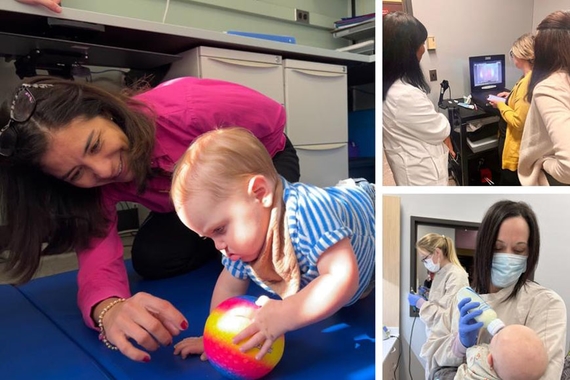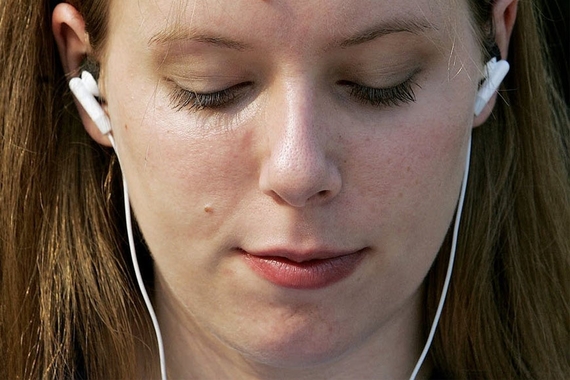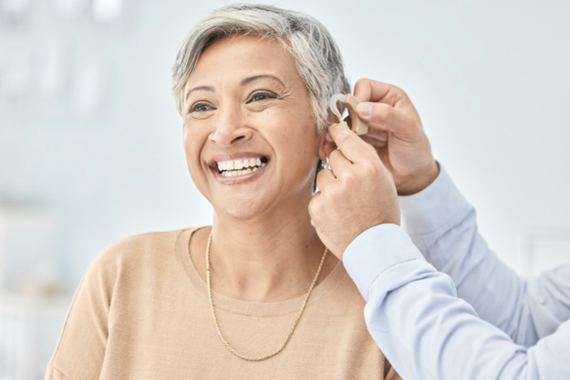Program Helps Transgender People Find Their True Voice
An Update to the Story
March 29, 2023
Since this article was first shared in 2018, there have been many developments in the gender-affirming voice and communication program in the Department of Speech-Language-Hearing Sciences. Marilyn Fairchild provided an update:
Over the past five years, there has been growth in the number of clients seeking and receiving services. She and her graduate students are providing services to individuals of varying gender identities and ages in both in-person and telepractice formats. They added an online group last summer due to a high demand for services and to help create connections among those seeking vocal change.
In her practice, Fairchild has been working with UMN and non-UMN providers, to look at ways to collaborate across fields in order to best support clients’ overall well-being during the process of vocal change. “I appreciate learning from and with my interprofessional colleagues as we seek to provide our clients with effective and responsive care,” she says.
She has also provided local, state, and national training on providing culturally responsive gender-affirming voice services. In 2019, she presented a TEDx talk on these services at the University of Minnesota.
“Training my students to provide gender-affirming care, and in turn watching them help clients find empowerment and affirmation in their voices is rewarding and meaningful,” she says. “In the current times, when there are legislative initiatives nationwide that seek to limit access to gender-affirming services, I want to do what I can to speak up and advocate for transgender and nonbinary individuals. I am grateful to provide gender-affirming services in the state of Minnesota and, more specifically, at the University of Minnesota, and I encourage folks to join me in advocating for transgender rights.”
How do we use our voices on a daily basis? Most days, it’s as simple as ordering coffee, talking with coworkers, or calling a friend on the phone. We present ourselves to the world using our voices through small interactions like these, so our voices are directly tied to our identities—both personally and how we are perceived by others. But what if identities and voices do not match?
For some people in the transgender community, this misalignment of voice and identity can make them feel uncomfortable using their voice to express themselves. Through the Department of Speech-Language-Hearing Science’s transgender voice and communication services, Marilyn Fairchild, speech-language pathology clinical supervisor, and Sheri Stronach, assistant professor, work with the clients in the Twin Cities transgender community to find a voice that matches their identity.
Answering the Call
The transgender voice and communication services all began with a phone call from a community member asking whether the University provided such services.
“Nobody on our staff had experience or training in that area,” remembers Fairchild. “We tried to refer and see if they wanted to go somewhere else. They said they preferred to stay on the waitlist. The clinic director then asked me if I would be interested in developing this [service] and I was very eager to do that.” Fairchild and Stronach applied for a U of M engaged department grant, which provides funding to develop community partnerships, and formed a team.
In the meantime, Fairchild began to train for work in this new clinical service area. “I did a year and a half of extensive training. I attended multi-day webinars, I went to live training sessions, I read books and articles, started networking with folks across the country who do this kind of work,” she describes. With the initial help of a mentor clinician, Fairchild saw her first client in the spring of 2017. Today, Fairchild says that about a third of her caseload is comprised of transgender voice clients.
Individual and Holistic
To best understand gender-affirming voice and communication services, it is vital to know that every aspect of the services provided has to be approached with the individual in mind. “[It] really depends on the client. It’s very individualized and holistic.... I’ve had folks come to see me at all stages of their transition, from pre-transition to far post-transition, and they come with different goals. Trying to set up a plan that will allow them to feel comfortable with their voice and communication is my number one priority,” says Fairchild.
Looking at each client through the lens of individuality—who they are as a person—and intersectionality—where additional aspects of identity overlap, like their race, gender, age, ethnicity, or health—not only allows Fairchild to work best with the client, but to avoid the traps of gender stereotypes. She describes it as walking a fine line.
“I usually start with having a very open and honest conversation with the client about that,” she says. I’ve found that by discussing things with my clients, we open up discussion regarding gender assumptions, and we can then work through them together. It becomes an empowering conversation rather than a stereotyping conversation...Then we work on navigating what feels natural for them rather than what may be too stereotypical.”
Once functional goals have been identified between client and clinician, services can begin. Clients work with Fairchild and her graduate students through a variety of vocal exercises to work on pitch, resonance, articulation, intonation, semantics, and nonverbal communication.
She emphasizes that it’s important to start small before expanding out to more conversational speech. “Anything we do in speech-language tends to start more discreetly, and then we generalize it to longer and more complicated utterances.”
While most of her work focuses on the verbal communication of the individual, it also includes nonverbals, like examining the number and type of gestures used or how much space the body takes up. Communication encompasses more than just speech, and she stresses the importance of working with clients to find a communication style that fits them best.
Communicate to Empower
For Fairchild and Stronach, the work they’re doing in the area of transgender voice and communication extends beyond meeting with clients to building community. It’s all about communication for empowerment. “It is in some ways a model for collaborating with other individuals, rather than just providing care for others,” says Stronach.
“It’s about the ‘with,’” adds Fairchild. Transgender voice and communication services aren’t focused on making changes to the individual or creating changes for the individual. Instead, it’s with the individual, centered on the idea of a reciprocal relationship that allows both persons to learn and grow together. Communication to strengthen relationships. Communication to learn more about a community. Communication to empower clients to live and speak as themselves.
This story was written by an undergraduate student in CLA.



